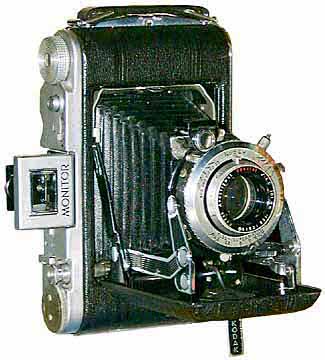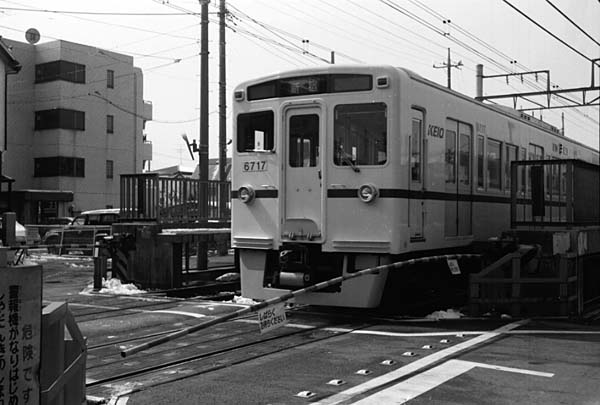Kodak Monitor Six-20

Kodak 6x9cm Folding Camera C.A.1946. Kodak had been manufactured many models of folding cameras from the beginning of the 20th Century. This six-20 folding camera was launched just after World War II. It had advanced features of Auto Stop film winding, Kodak Anastigmat Special lens, Flash Supermatic shutter and an accessory shoe on the body. Though the Kodak Co. seemed to rank it as a high-grade camera famong the their products, it had no coupled range finder mechanism. The focusing was accomplished by rotating with front cell of the lens and was able to set from 3.5 feet to infinity. It was rare to find right hand body release button for such a 6x9cm folding cameras. Though a reflect finder had been found on such cameras long ago, this camera still had one on the top of lens standard. It is useful sometimes for waist level shooting. The folding view finder on top of the body is clear and has a manual parallax compensation. The Auto Stop system of film winding wasan advanced feature for a 6x9cm folding camera of this age.
As per Kodak Anastigmat Special lens 101mm F4.5, the lens configuration is 4-Element 3-group, coated and F32 of minimum aperture. According to the age determination code method for Kodak Lens(below), the lens was manufactured in 1946. The Flush Supermatic shutter has B,1 - 1/400 Sec. speeds. The synch terminal that looks like a horn on the photo can be attached to an adapter for standard strobe connection.
The age determinatgion code of Kodak Lenses
This Kodak Anastigmat Special has a number of "EO 10916".
The first two letters of lens number means for the age of lens manufactured as below table. The two digits(figures) corresponded to two letters by the table stands for the lower digit of the age(19xx).
| 1 | 2 | 3 | 4 | 5 | 6 | 7 | 8 | 9 | 0 |
|---|---|---|---|---|---|---|---|---|---|
| C | A | M | E | R | O | S | I | T | Y |
We will see 46 corresponded to the EO by the table. It is easy to tell the lens was manufactured in 1946. When was your Kodak Monitor produced?
Samaple Photo
by Kodak Monitor Kodak Anastigmat Special 101mm F4.5 f11 1/200 TMAX 100

There still is this kind of railroad crossing in the outskirts of Tokyo. They have to wait for a long time, especially near the station. There are a lot more trams in rush hour and the crossing often doesn't open for long time.